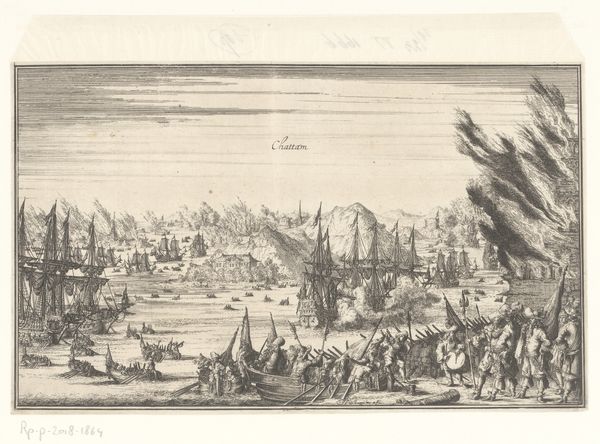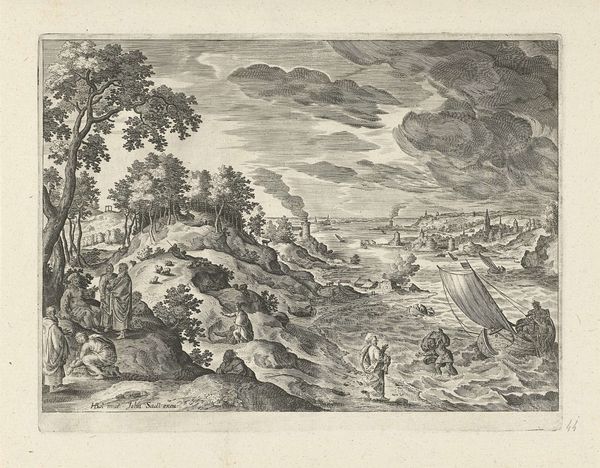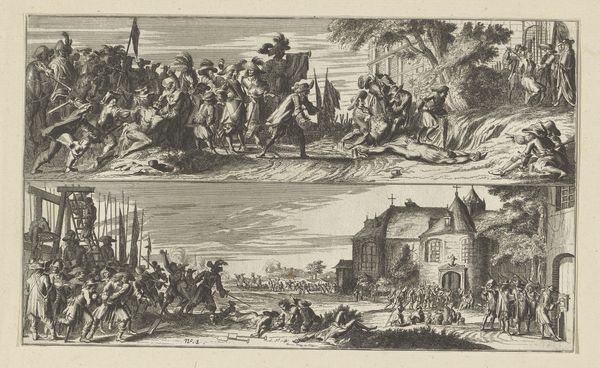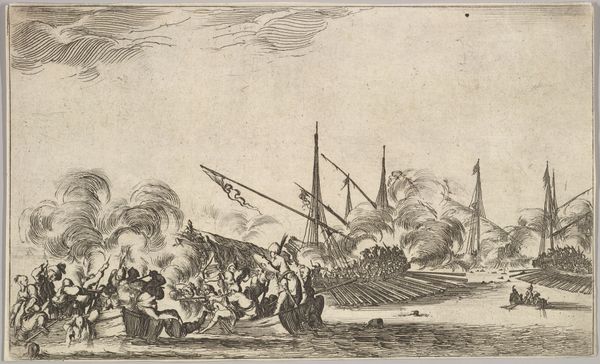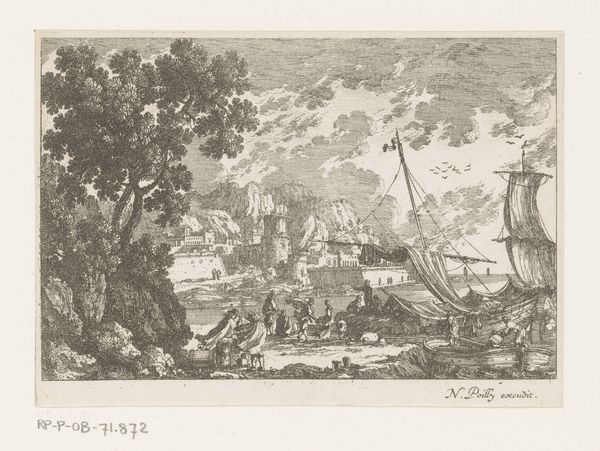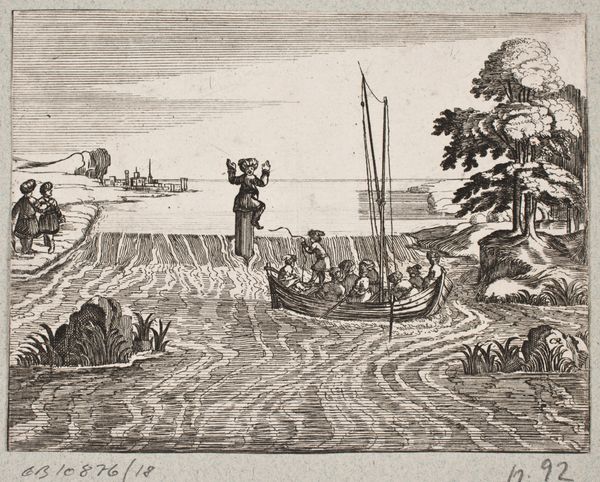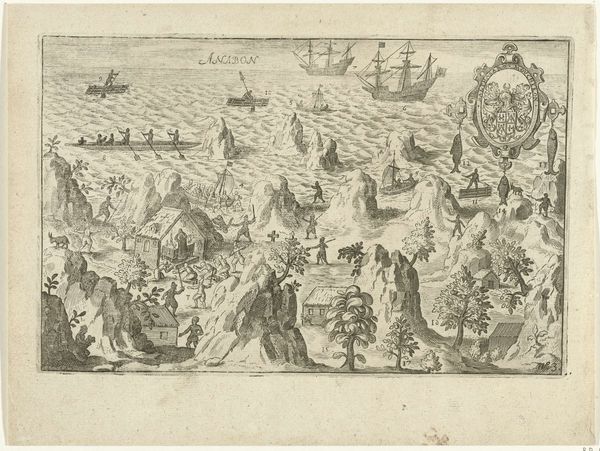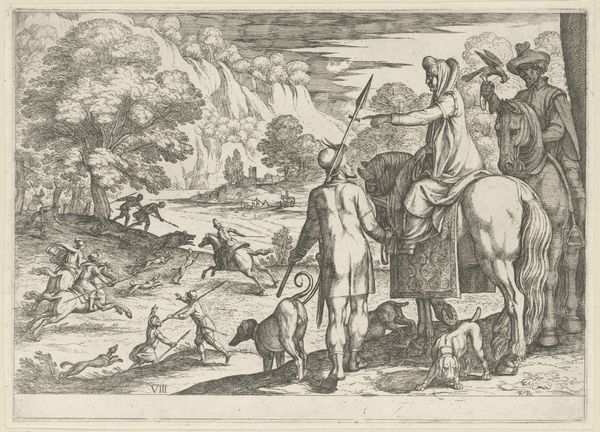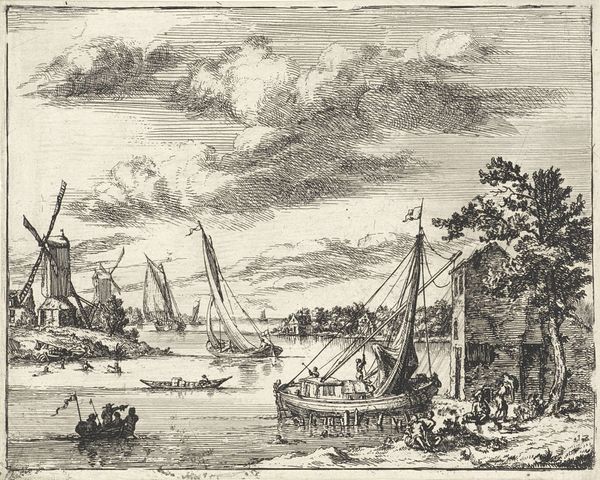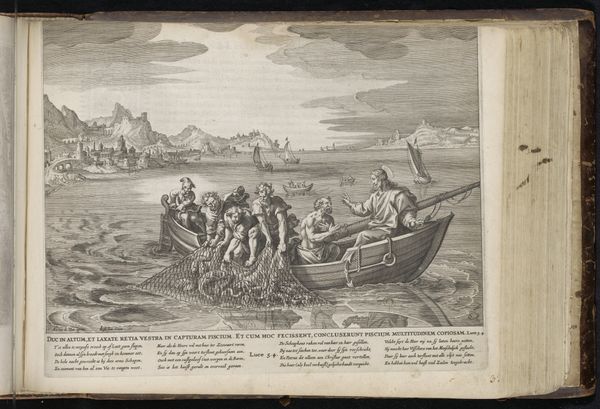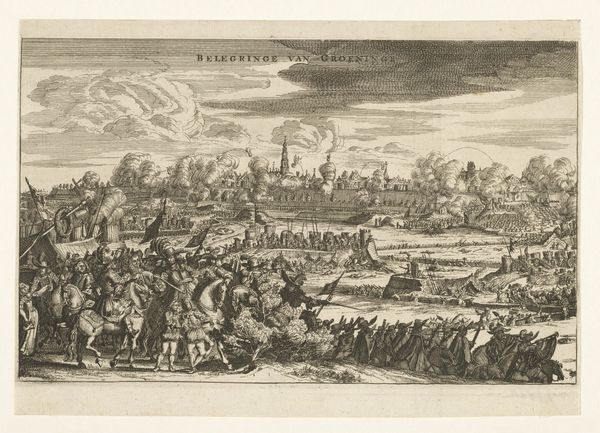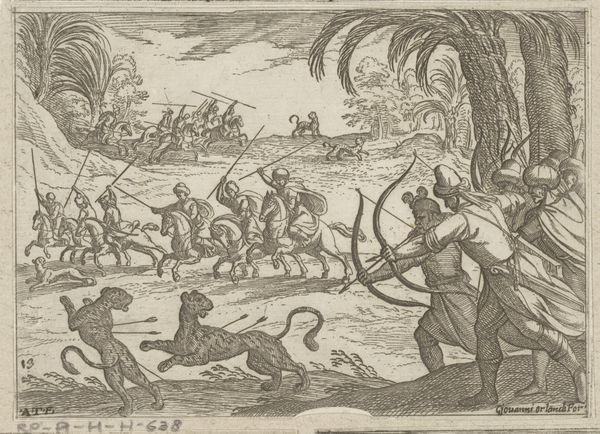
print, engraving
#
narrative-art
#
baroque
# print
#
history-painting
#
engraving
Dimensions: height 182 mm, width 300 mm
Copyright: Rijks Museum: Open Domain
Curator: What a chilling composition. I find myself drawn into this engraving at the Rijksmuseum, titled "Twee voorstellingen van Franse wreedheden, 1672", which translates to "Two Representations of French Cruelties, 1672". Editor: Cruelties indeed. My immediate reaction? This feels like a nightmare meticulously etched into metal. So much suffering rendered in stark monochrome. It's overwhelming. Curator: The work dates from 1673 to 1677, a time when memories of the Franco-Dutch War were raw and very much shaping political discourse. Prints such as these served as propaganda, intended to sway public sentiment. Editor: Propaganda, yes, but effective propaganda, precisely because of that stark rawness. Look at the upper panel: lifeless bodies strewn before riders, so carelessly discarded! It’s the nonchalance, the everyday quality of the violence, that really gets under your skin. Curator: Note how the composition contrasts scenes of land and sea. The upper section depicts a landscape marred by conflict, while the lower portrays a brutal maritime assault. It suggests the breadth of the war’s impact on civilian life and property. Editor: The chaos of the bottom half pulls me right in. That town in flames! Those desperate figures clinging to boats, fleeing the inferno! It’s less a scene and more a feeling, that constant sense of being uprooted, adrift, destroyed. Did anyone care about accuracy, about actual historical events, or was it purely about stirring up outrage? Curator: Objectivity was not exactly a priority, but consider the context. Such images would reinforce narratives of national victimhood. Visuals could bypass the slow process of reasoned debate, going straight for an emotional impact that would cement a shared identity. Editor: A powerful but grim function of art, really. Still, even divorced from that original purpose, the artistry endures, albeit in a disquieting way. These aren't just images, these are scars, historical echoes whispering tales of pain and resilience. It's like witnessing history flayed open before you. Curator: Precisely. Reflecting on it now, it is clear how such visuals provided crucial fuel for nationalist sentiments to spark. Editor: Well, thanks for highlighting such a compelling, if brutal, artifact. It's a reminder that art can be both beautiful and terrible, often simultaneously.
Comments
No comments
Be the first to comment and join the conversation on the ultimate creative platform.
